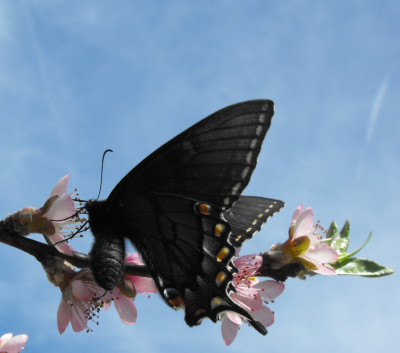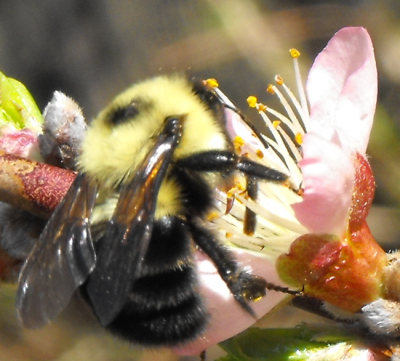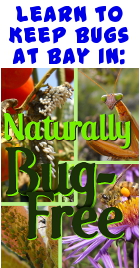
Native pollinators
 Outside
the kitchen window, our peach tree is buzzing with pollinators. I
can see hundreds of insects at a time, but they fly too quickly to
really count. Despite having three honeybee hives, our
domesticated pollinators make up a scant 1% of the peach tree
pollinator haze, and other gaudy pollinators like butterflies and
bumblebees are also in the
minority.
Outside
the kitchen window, our peach tree is buzzing with pollinators. I
can see hundreds of insects at a time, but they fly too quickly to
really count. Despite having three honeybee hives, our
domesticated pollinators make up a scant 1% of the peach tree
pollinator haze, and other gaudy pollinators like butterflies and
bumblebees are also in the
minority.
I spent a few minutes
last week snapping shot after shot of the vibrant
insect population on the peach tree, then went inside to try to figure
out who all of these wild pollinators were. That's when I
stumbled across Bug Guide,
a website run by amateur entomologists who want to share their love of
insects with you. You can browse through their online guide,
which is chock  full of photos and
fascinating information. Then,
when you get stumped, you can submit photos of your mystery insects and
their experts will give you an ID, often within an hour or two.
full of photos and
fascinating information. Then,
when you get stumped, you can submit photos of your mystery insects and
their experts will give you an ID, often within an hour or two.
This week's lunchtime
series showcases four common pollinators that
you've probably never heard of. I hadn't heard of most of them
either, and had to ask the experts at Bug Guide for a bit of
identification help. I make no promises that these are the most
common
pollinators out there --- in fact, the take home message I got from my
time spent peering at peach blossoms is that there are dozens of
species of native pollinators and no single insect is the silver bullet
to make sure your plants produce fruit. Rather than focusing
on saving the honeybee, we'd be much better served to encourage a
diversity of wild pollinator species by keeping our farms and gardens
on the wild side.
 This post is part of our Native Pollinators lunchtime series.
Read all of the entries: This post is part of our Native Pollinators lunchtime series.
Read all of the entries: |
Want more in-depth information? Browse through our books.
Or explore more posts by date or by subject.
About us: Anna Hess and Mark Hamilton spent over a decade living self-sufficiently in the mountains of Virginia before moving north to start over from scratch in the foothills of Ohio. They've experimented with permaculture, no-till gardening, trailersteading, home-based microbusinesses and much more, writing about their adventures in both blogs and books.
Want to be notified when new comments are posted on this page? Click on the RSS button after you add a comment to subscribe to the comment feed, or simply check the box beside "email replies to me" while writing your comment.
- Remove comment

- Remove comment
